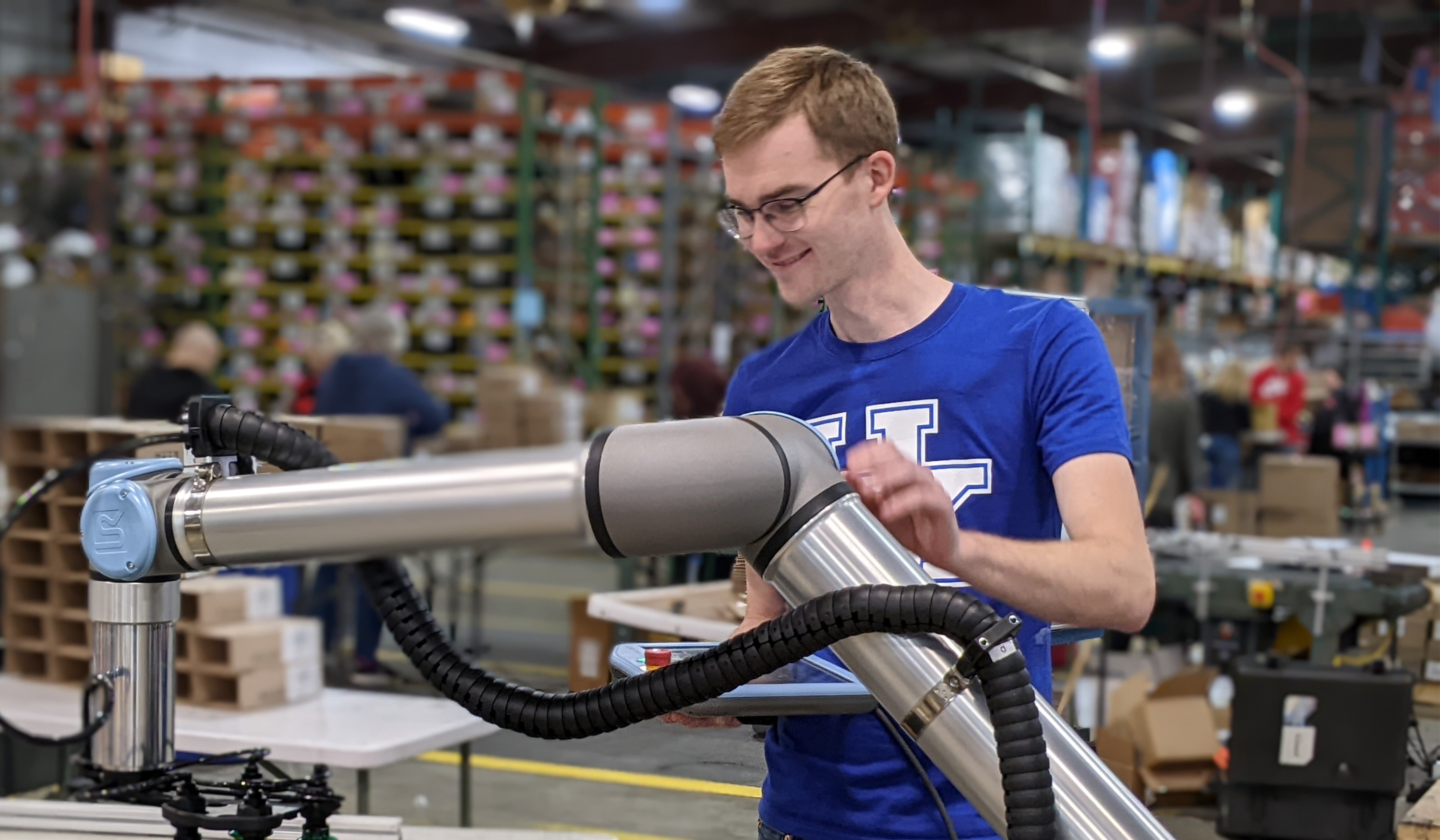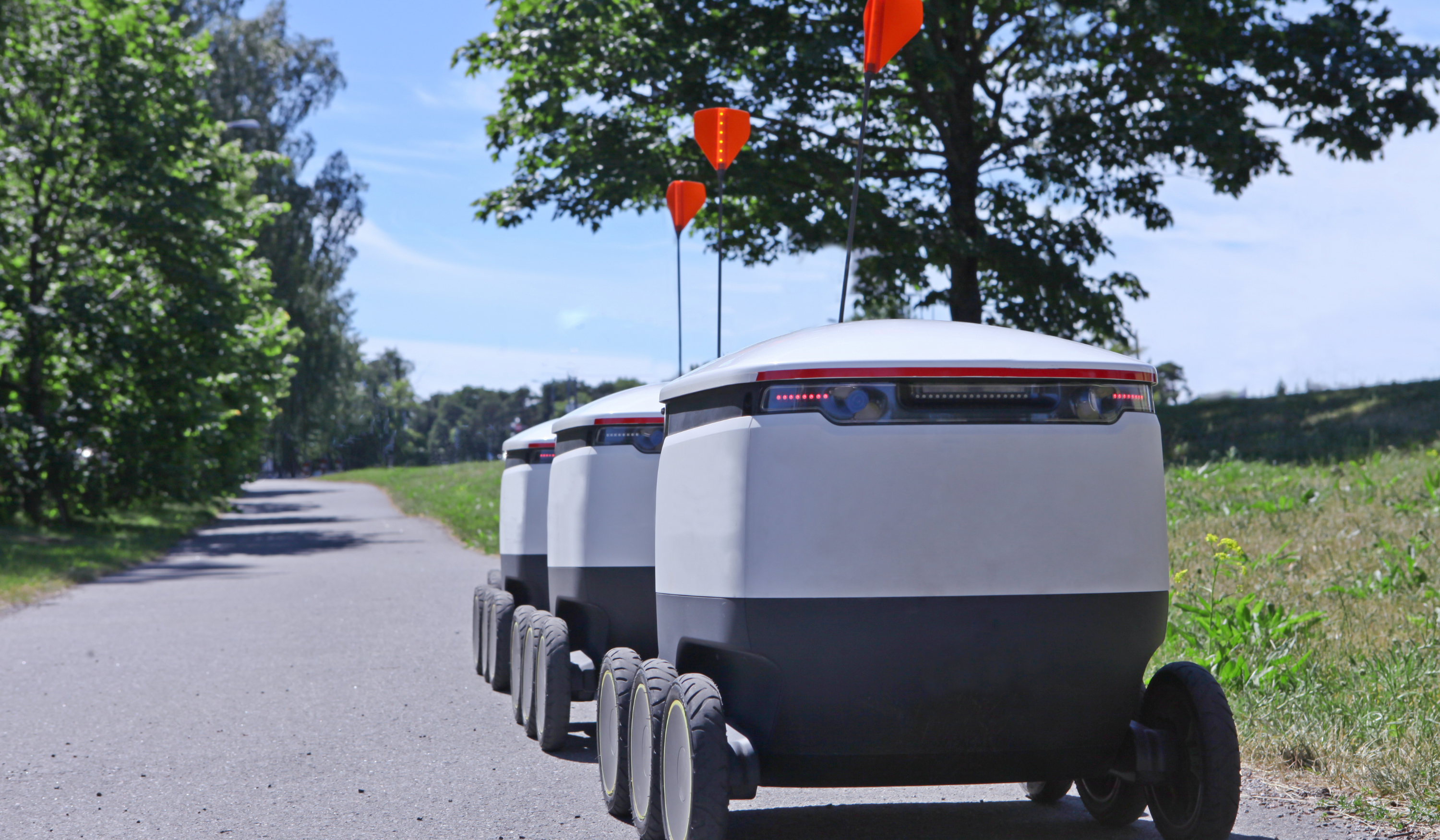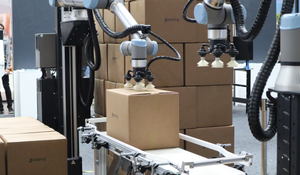How to Prepare a Business for Lean Robotics in Five Steps

Posted on Feb 28, 2018 7:00 AM. 5 min read time
Preparation is the path to success for any robot deployment. Here's how to do it right, in just five steps.
"Before anything else, preparation is the key to success."
So said Alexander Graham Bell and — although we are not all trying to invent the telephone — the success of your robot deployment also hinges on great preparation.
Lean Robotics is a methodology to improve the success of your robot deployment. It guides you through the entire process, including that all-important first "Prepare" phase. Good preparation involves more than just announcing "we're going to introduce robots" in one team meeting. It requires a well considered, structured introduction into the business before you even order the robot.
In some businesses, a new robot can arrive to a sea of angry faces. Bad feeling within the workforce can build up with unfounded rumors of what the robots will mean to their jobs. However, if you prepare properly, the robot can arrive to smiles and enthusiasm from the workforce. Sound like an impossible dream? Not if you prepare properly!
Involve your team in your lean robotics project!
Step 1 — Personally commit to Lean Robotics
Before you can prepare the business and the team, you have to prepare yourself.
Lean Robotics is more than just a method for designing robotic cells. It involves using the "Lean mindset" which, for some businesses, might be quite different from how machines have been deployed in the past. If you don't fully commit to this mindset then — and there is no point in sugar-coating this — there is a high chance you will fail to implement Lean Robotics.
According to research, the top critical success factor for a Lean implementation is "Active leadership." If you commit to making Lean Robotics work and demonstrate this commitment by getting actively involved, you have a much higher chance of success.
Step 2 — Clarify "why robots?"
People usually deploy a robotic cell to solve a particular issue in the business. You should work out why you want to introduce robots before you begin planning how to do it. This helps you to define a clear goal which you can them use to explain the benefits of robots to the rest of the team. It also allows you to limit the scope of the robot deployment, which can help to reduce some people's fears about robots — you can reassure them that you are not automating the whole business, only one specific cell.
Three common issues you can solve using robots are:
- Productivity Issues — The process productivity is not as good as it could be. — This might show up as regular variations in product quality or volume of product being produced. You might also experience staff complaints that one part of the process is holding everything else up. Robots can help, for example, to smooth out the process flow or allow you to move employees to other bottlenecks in the process.
- Quality Issues — There are many inconsistencies or deviations in the product. — This might show up in the quality control stage or from workers at subsequent cells in the process. Robots can help by improving the consistency of these tasks.
- Output Capacity — The entire process is not producing as much as you had estimated. — This issue usually requires further investigation to identify the root cause of the problem. The "Five Whys" technique (ask "why" five times or more until you uncover the root cause) is a good way to do this. Then you can decide if a robot is a good solution.
Step 3 — Assemble a team
Although active leadership is essential, don't try to do everything yourself!
The success of Lean Robotics relies on everyone getting involved in the robot deployment. However, when I say "everyone" I obviously don't mean that your entire workforce should stop all their other projects to work on the robot deployment. You need to identify a core team of people who will drive the project.
There are nine roles you need to fill for a Lean Robotics deployment (including project leader, manufacturing manager, installer, etc). These roles don't have to be carried out by nine separate people, but they are each important for the success of the project.
Download the Team Roles and Responsibilities Spreadsheet for help filling the nine roles.
Connect with your mobilizers
Within your team, there will be a few key stakeholders to the deployment. They will have the biggest influence on success of the project and it's acceptance by the rest of the workforce. Get these people on board as early as possible as they will ease the introduction of robots to the rest of the team.
Meet with your mobilizers first, even if you have not yet decided on who will carry out the rest of the roles and responsibilities.
Ask questions and listen
Asking questions is vital. It allows you to get feedback from the team and — more importantly — it ensures that everyone is actively involved. You should develop a question and answer strategy with your core team as this will help when you roll out the news of the robot to the rest of the workforce.
Step 4 — Define your scope and plan your deployment
You and your team should define the scope of your project and start work on the deployment strategy. At this stage, you're not yet designing the robot cell itself. You are just laying the necessary groundwork so that you can later present a strong case to the workforce. See the Lean Robotics book for more details on this.
Step 5 — Drum up enthusiasm
When you are ready to announce your plan, it can be a good idea to hold a "kickoff event". This could be as simple as a presentation — with lots of room for questions, of course.
The key is to present the robot deployment as a collaborative "mission to be accomplished", not a solution which has been pre-decided by management. You want to develop enthusiasm about the robot. Let people feel like they are being listened to and encourage them to propose ideas.
Start 5 — Start the design phase
Preparing your business for the arrival of robots is only the start of Lean Robotics. For help with the Design, Integrate and Operate phases (as well as more details about the Prepare phase) download the Lean Robotics book at leanrobotics.org.

.jpg?width=640&name=Voodoo-pix-3%20(1).jpg)





Leave a comment